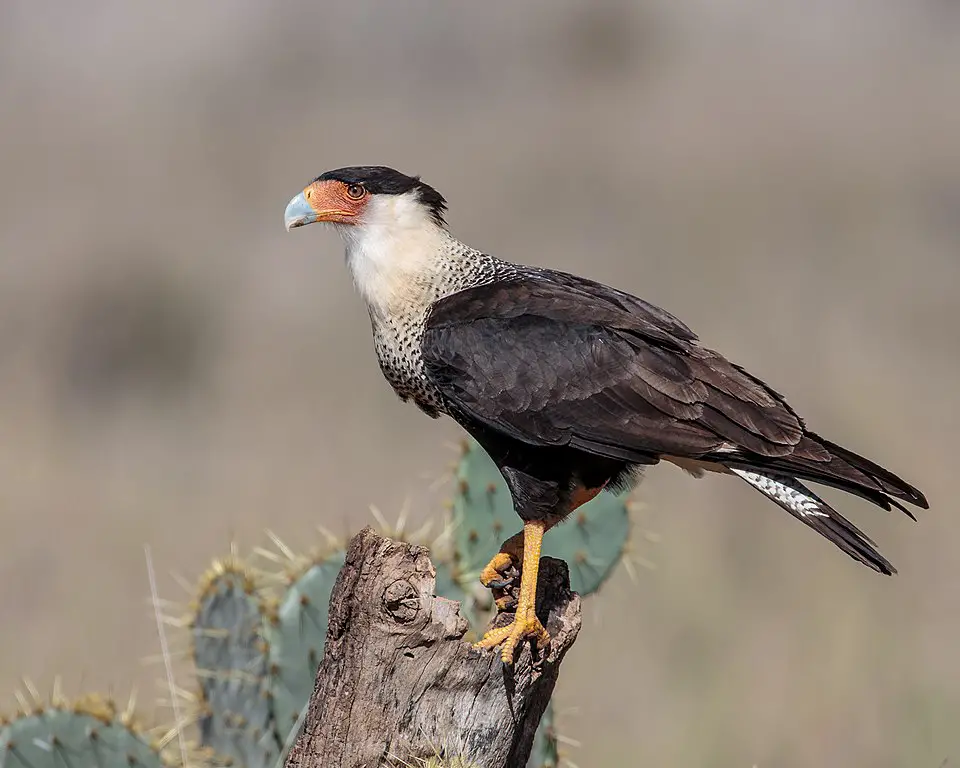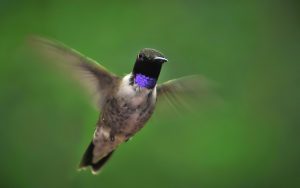Texas is one of the best states in America for birdwatching due to its geographic diversity, hundreds of miles of coastline, and sheer size.
Making a concise list of birding locations is challenging because the entire country of France could fit in Texas, with room to spare.
But if you need a place to start, here’s a list of places guaranteed to delight bird watchers with both fantastic numbers and high species diversity.
Best Birding Hotspots in Texas
The most action-packed birding hotspots in Texas include:
- Anahuac National Wildlife Refuge
- Brazos Bend State Park
- Hagerman National Wildlife Refuge
- Hornsby Bend Bird Observatory
- Mitchell Lake Audubon Center
- Choke Canyon State Park
- Aransas National Wildlife Refuge
- Bentsen Rio Grande Valley State Park
- Santa Ana National Wildlife Refuge
- Big Bend National Park
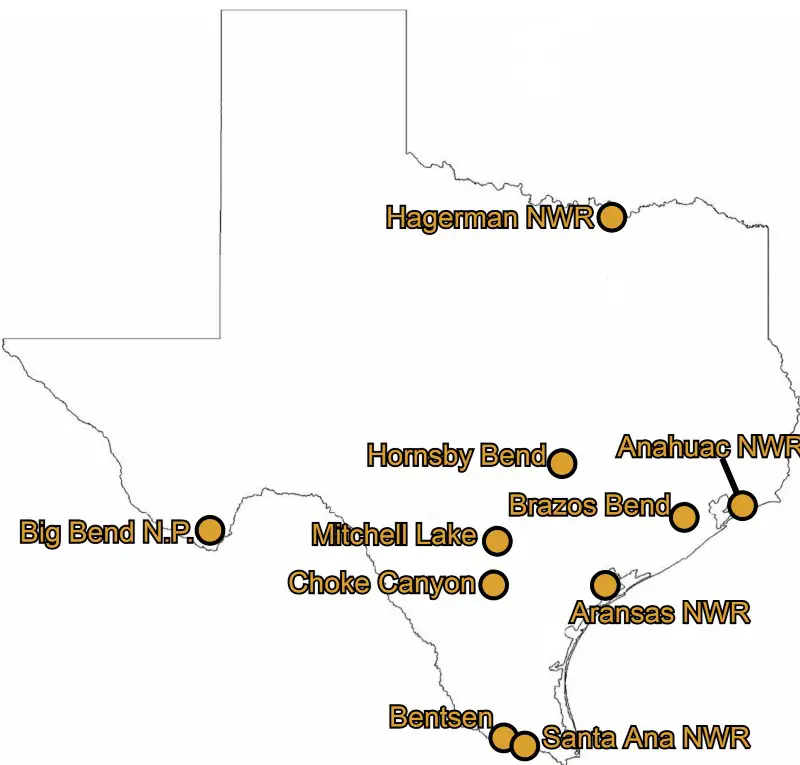
Remember that birds are significantly more active before 10am Regardless of where you go, arrive early if possible.
Which Hotspot Should I Visit?
Season plays a major role in choosing where to birdwatch in Texas. Here are some tips to narrow down your options.
Winter Birding
Winter bird watching season in Texas is from Thanksgiving to early March. It’s characterized by high numbers of ducks, sparrows, raptors, and shorebirds along the coast.
If birding from November through March, choose one of the following:
- Hagerman National Wildlife Refuge (Dallas)
- Anahuac National Wildlife Refuge (Houston)
- Aransas National Wildlife Refuge (Corpus Christi)
- Choke Canyon State Park (south of San Antonio)
- Santa Ana National Wildlife Refuge (far South Texas)
Hagerman National Wildlife Refuge
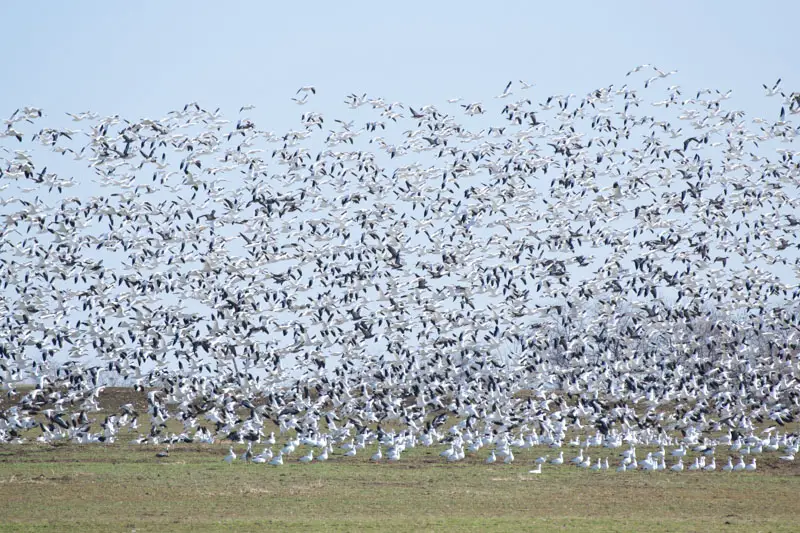
Hagerman is a mix of marshy lake edges, open fields, and abundant hardwood forest.
Expect Snow Goose and Ross’s Goose by the hundreds or thousands, Bald Eagle, and mixed duck species. The woodlands are good for woodpeckers like Red-headed, Pileated, and Hairy, plus Brown Creeper, Brown Thrasher, and Golden-crowned Kinglet. Purple Finch is possible along wooded edges. Expect 50+ species in a morning.
See the full birding guide to Hagerman National Wildlife Refuge here.
Anahuac National Wildlife Refuge
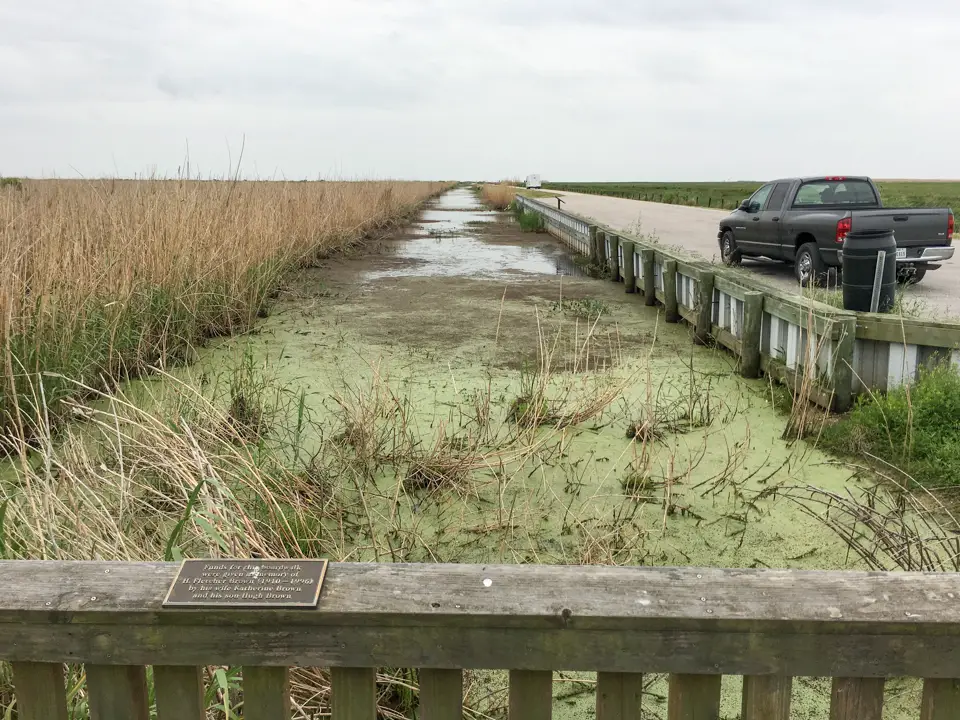
Anahuac hosts ducks and geese by the thousands, plus abundant waders like White Ibis, Roseate Spoonbill, and egret species.
It’s also good for raptors like Northern Harrier, Merlin, occasionally Peregrine Falcon and Bald Eagle. Shorebirds and American Bittern are present as well. Expect 45 to 60 species in a morning.
Aransas National Wildlife Refuge

The winter home of the Whooping Crane, plus plenty of Sandhill Cranes. Features a good mix of waterfowl, shorebirds, raptors, and wintering warbler species in clusters of Live Oaks. Expect 50+ species.
Features to look forward to include easy access to many areas by car, flat and easy walking trails, and a 40 foot high observation tower. Whooping Cranes are often visible from the tower, feeding in the distant marsh.
Choke Canyon State Park
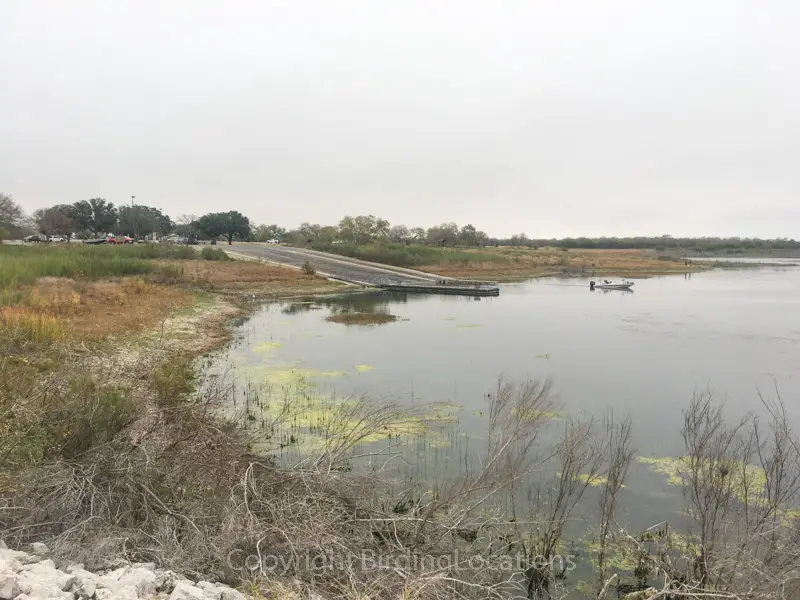
This park is split into two units, this refers to the Calliham Unit. It hosts many south Texas species like Green Jay, Harris’s Hawk, Great Kiskadee, Green Kingfisher, and Audubon’s Oriole.
Hundreds of ducks are always present at 100 Acre Lake, plus other birds like Osprey , Vermillion Flycatcher, and kingfishers. Expect 45 to 55 species.
See the full birding guide to Choke Canyon State Park here.
Santa Ana National Wildlife Refuge
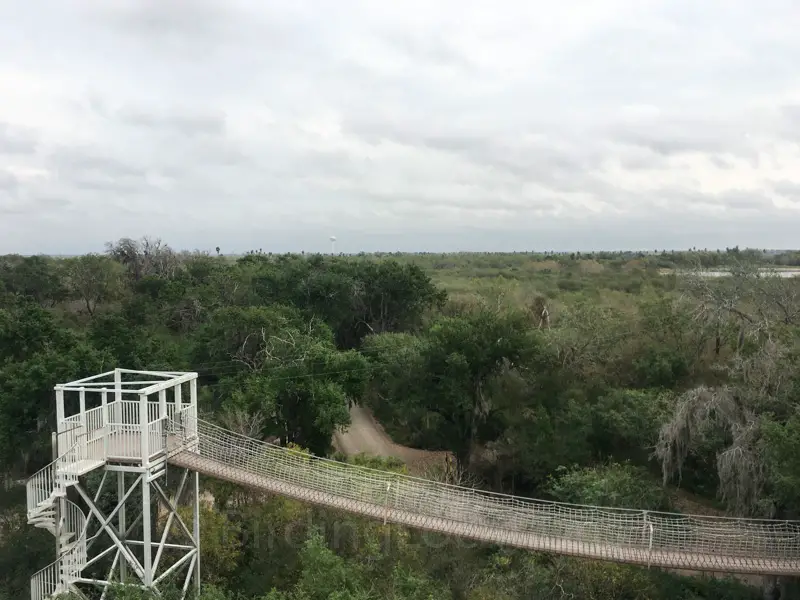
This refuge is famous in the Texas birding community for it’s high diversity and collection of tropical species. Habitat is a mix of shrubby subtropical woodland, open fields with small lakes, and wetlands sheltered by woodland.
The headquarters building features a bird blind viewable from inside. The park offers a three story hawkwatch tower, and free guided bird walks most winter mornings. Expect 45 to 65 species.
See the full birding guide to Santa Ana National Wildlife Refuge here.
Spring Migration
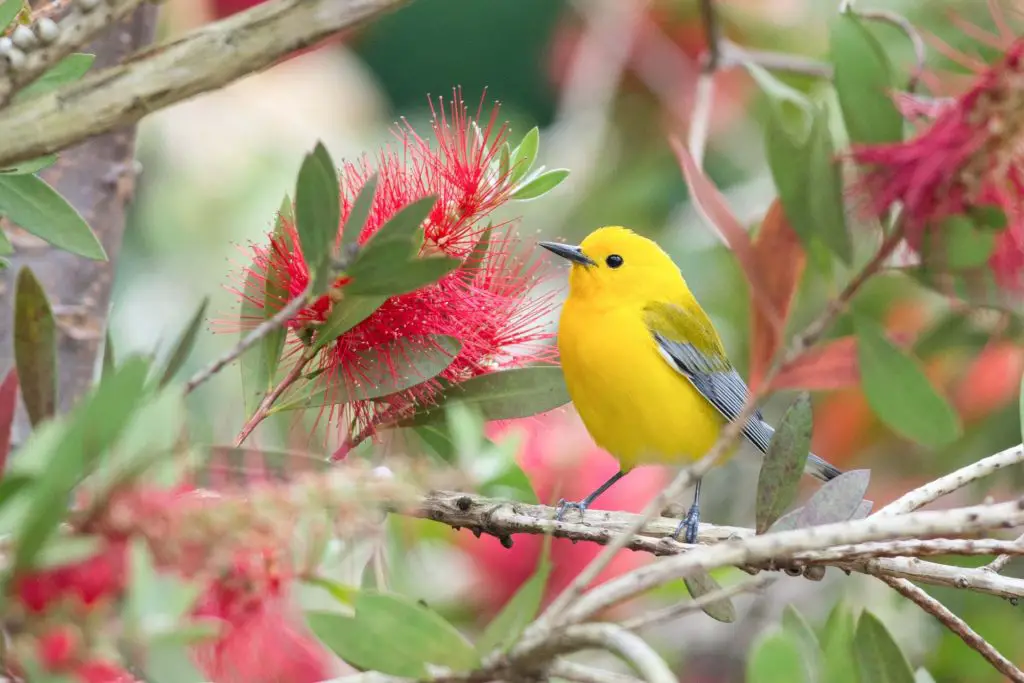
Spring migration along the Texas coast can be incredible. Migrants like orioles, tanagers, grosbeaks, and warblers are pouring in from Mexico on their way north, and coastal hotspots are the easiest places to see them.
If birding between April 15th and May 10th, choose one of the following:
- Anahuac NWR & High Island (Houston)
- Aransas National Wildlife Refuge (Corpus Christi)
- South Padre Island Birding Center (far southern tip of Texas)
- Big Bend National Park
High Island is world famous for its “fall out” days, where unfavorable weather conditions for flying can cause the birds to gather in amazing numbers. But this phenomenon can also occur anywhere along the coast. There’s plenty of infrastructure in a small area like boardwalks, bird blinds, and viewing platforms at Boyscout Woods and Smith Oaks Sanctuary.
See the full birding guide to High Island here.
Aransas National Wildlife Refuge is always fun with plenty to see, but it’s a very large area and will require walking and searching for your birds. If you prefer a much more laid back location, try Leonabelle Turnbull Birding Center in Port Aransas (birding guide here). It’s a more “sit and wait for the birds to come to you” type location.
The South Padre Island Birding Center is small but always good during migration (birding guide here). It features a native plant garden at the front, and coastal wetlands boardwalk in the rear two thirds of the property. Be sure to alway visit the convention center next door and walk around the outside of the building. The trees and shrubs here are also always good for birds.
See the full birding guide to the South Padre Island Birding Center here.
Big Bend is the outlier here since it’s far from the coast. This massive desert park provides a totally different mix of bird species than any other recommendation on the list, and species diversity here peaks during spring.
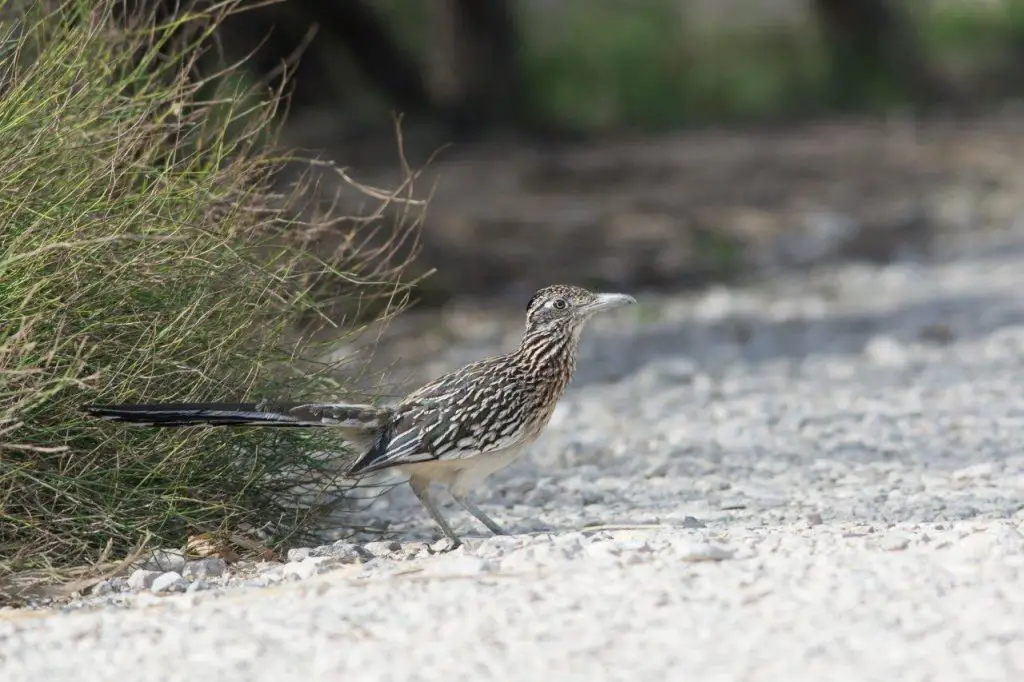
The important habitats in Big Bend are the Chisos Mountains and the Rio Grande River. Both are beautiful and scenic, and can provide fantastic species like Colima Warbler, Common Black Hawk, Vermillion Flycatcher, Mexican Jay, and Elf Owl.
The last weekend of April and first weekend of May is best for birding in Big Bend.
See the full birding guide to Big Bend National Park here.
Summer Birding
Summer in Texas is rough for both people and birds. High temperatures regularly hit 100 degrees, and the birds respond by hiding in the shade and staying quiet. It’s by far the least active time of year for bird activity.
But if summer is your only option, here are some decent choices:
- Brazos Bend State Park
- Bentsen Rio Grande Valley State Park
- Santa Ana National Wildlife Refuge
Getting an early start is a must when birding during the summer. There’s a brief burst of activity in the first two hours after sunrise, and then the temperatures begin to quickly rise. The birds go silent, and there’s not much to see for the rest of the day.
Fall Birding
The fall birding season in Texas is roughly September 1st through October 31st. Fall migration is slower and longer than spring, with lower daily diversity but higher overall numbers of migrants.
Likely the biggest fall spectacle is raptor migration. Groups of hawks, called a kettle, can form and grow to be thousands strong. The Hazel Bazemore hawkwatch platform near Corpus Christi hosts daily raptor counts known to observe tens of thousands of hawks in a single day. Late September and early October is the best time to go.

As for fall hotspots, all on the statewide list are equally good options. Simply visit the nearest one.
Here’s the list again if you need it:
- Anahuac National Wildlife Refuge
- Brazos Bend State Park
- Hagerman National Wildlife Refuge (full guide)
- Hornsby Bend Bird Observatory (full guide)
- Mitchell Lake Audubon Center (full guide)
- Choke Canyon State Park (full guide)
- Aransas National Wildlife Refuge
- Bentsen Rio Grande Valley State Park (full guide)
- Santa Ana National Wildlife Refuge (full guide)
- Big Bend National Park (full guide)
If considering Big Bend, know that fall migration is early in west Texas. Mid to late August is the best time for fall birding in Big Bend.
Need More Local Options?
Visit the Texas Hotspots Map for more great birding locations across the state.
Each hotspot has a full written guide on how to see the most birds while you’re there, ensuring a fun and successful visit.
Happy Birding!

